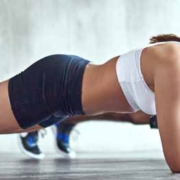Shoulder Muscles Working Together
The shoulder is a complex that relies on four different joints to work together to produce desired motion. These four joints are the sternoclavicular, the acromioclavicular, scapulothoracic, and the glenohumeral joints. The most commonly talked about joint of the shoulder complex is the glenohumeral (GH) joint.
The clavicle is the collarbone and the scapular is the shoulder blade and the glenohumeral joint is where the arm attaches to the shoulder blade. The glenohumeral joint is a ball and socket joint. Commonly over a person’s lifetime they may injure this joint by overuse, trauma, abnormal wear and tear, or malalignment.
The convex humeral head at the proximal part of the upper arm bone sits in a smaller concave piece of the scapula (the acetabulum). This head is larger than the concave acetabulum. Because of this and the large amount of motion that can occur here, its stability is dependent upon the ligaments, capsule supporting the joint, and the muscles that act on the shoulder to both support the resting joint and create purposeful and guided movements for all activities.
If one’s posture is correct and balanced and all associated muscles coordinate properly, this head can stay centered while moving. If, however, posture is bad or there is a dysfunction in the musculature or a stretched out capsule the motion will be altered. Then, wear and tear can over time cause the joint to have excessive compression or distraction causing further pain and dysfunction.
Proper flexibility and strength in the supportive muscles of the shoulder will add longevity and quality to the sports and activities of daily life. The biomechanics of the four joints working together synchronously are key.
The rotator cuff along with the shoulder blade muscles must coordinate. During activities, the range of motion of the glenohumeral joint works closely with the scapula. They rely on each other for upward motion and on the lowering phase to ensure the right amount of mobility combined with stability.
When initiating shoulder movement, the scapula tends to be in a setting phase meaning that the wing is stabilizing and contracting to support the shoulder motion.
There is very little motion in the scapula. The scapula then has some actual rotation though inconsistent from person to person. Finally, as the arm goes overhead, the higher it goes there should be more elevation to be able to provide the proper support for the arm to move within the joint in a safe manner.
It is often said in pilates and yoga to keep the shoulder down and back. This position is good for when the arm is down. If correct posture is present there needs to be very little muscular activity because the head and neck are in the body’s line of support. When, however, the arm is elevating above 90 degrees, the higher the arm moving upward, the more important it is for the upper and lower trapezius to coordinate with the arm and the scapular must rotate upward with the use of the upper trapezius muscle.
Scapular dysfunction with the timing of proper muscles working can have an impact on impingement of the shoulder. This can stress the rotator cuff muscles, making them work harder to control movement. Many people over their lifetime have bursitis or rotator cuff problems.
Proper exercise of these areas can help to avoid shoulder breakdown and allow the fun of participating in simple up to vigorous sporting activities in a safe manner. Don’t wait until the shoulder bothers you.
Align posture and exercise right so that your participation is not interrupted. If your joints are already compromised try and identify the problems, work on specific deficiencies, and this will keep you in participation of the things you enjoy.
Here’s To Your Health!
Find that professional that understands the body fully and help to guide you to your longevity in activities. Exercise smart and undo excessive strains. For further information, please call Fitness Together in downtown Naples at (239) 263-9348.





Leave a Reply
Want to join the discussion?Feel free to contribute!